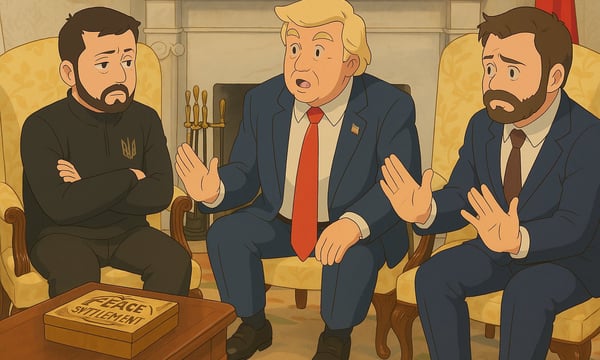AI vs Art: Studio Ghibli Edition
Addressing issues related to AI-generated art requires a comprehensive strategy that involves collaboration between policymakers, technologists, and artists. It is crucial to establish guidelines that promote transparency, accountability, and responsible use of AI tools in the creative process. By fostering dialogue and awareness within the industry, we can better navigate the ethical and legal implications of AI-generated art. Emphasizing the importance of human creativity and intentionality will help shape the future of art in a technology-driven world. It is essential to prioritize the protection of intellectual property rights and ensure fair compensation for artists working with AI technologies.

OpenAI’s GPT-4o and the Debate Around AI-Generated Art
Upon its release last month, OpenAI’s GPT-4o, which allowed people to transform any picture into the artistic style of Studio Ghibli, became a global sensation. The bandwagon was joined by folks from all walks of life and in no time, there were Studio Ghibli versions of U.S. President Donald Trump, Elon Musk, and others all over the internet. The rush caused a meltdown of GPUs, forcing OpenAI CEO Sam Altman to announce user limits on image generation.
A previous attempt at image models made by Google’s Gemini 2.0 Flash sparked controversy when it was used to remove watermarks from copyrighted images. The current wave rekindles the debate around the issue of whether training AI models on copyrighted works constitutes fair use, and what security artists have amidst such technological advances.
Legal Concerns and Copyright Issues
The primary concern revolves around whether AI-generated images that replicate the style of Studio Ghibli violate copyright laws. According to IP lawyer Evan Brown, while the specific style of an artist is not explicitly protected by copyright, the use of copyrighted works to train AI models poses a legal dilemma. If AI systems are trained on copyrighted materials without permission, this could constitute a violation of copyright law. However, the existing copyright laws do not adequately address the complexities introduced by AI.
For instance, debate centers on whether the visual style of a living artist can be copyrighted. As of now, there are no clear legal precedents that definitively resolve these issues, leading to a situation where companies like OpenAI are operating in a “legal grey area” regarding the generation of art in the style of living artists.
Challenges and Criticisms from Artists
Hayao Miyazaki, co-founder of Studio Ghibli, has long been vocal about his disdain for AI-generated art. He has described it as “an insult to life itself,” expressing concerns about its impact on creativity and authenticity. Miyazaki’s criticism stems from a belief that AI lacks the emotional depth and human experience that characterize true artistic expression.
His views reflect a broader apprehension among artists regarding the potential devaluation of human creativity in the face of advancing technology. It also disregards the time and labor a single frame of animation takes to come to life. AI allows people to bring this effort and time to a negligible level, taking away the essentials of craft and putting the originality of artists at stake.
Solutions and Ethical Considerations
The challenges posed by AI-generated art necessitate a multifaceted approach that includes revising existing laws, implementing safeguards, and encouraging ethical practices. The most important step is to revise and update copyright laws to address the nuances of AI-generated content.
Lawmakers must establish clear definitions of what constitutes an “original work” in the context of AI and create guidelines that govern how AI models can be trained. Companies developing AI technologies must implement safeguards, such as content filters and user agreements, to prevent unauthorized use of artistic styles.
In addition, the discourse around the ethical use of AI needs to be strengthened. Collaboration between artists and AI developers should be promoted to create frameworks that respect artistic integrity while fostering innovation. International copyright frameworks, like the European Union Copyright Directive, can provide valuable insights for ensuring fair compensation for artists.
While the issue around Art and AI will continue to evolve, bringing the subject under rightful laws and ethical standards is crucial to preserving the peculiarities of artists while allowing innovation to flourish.

